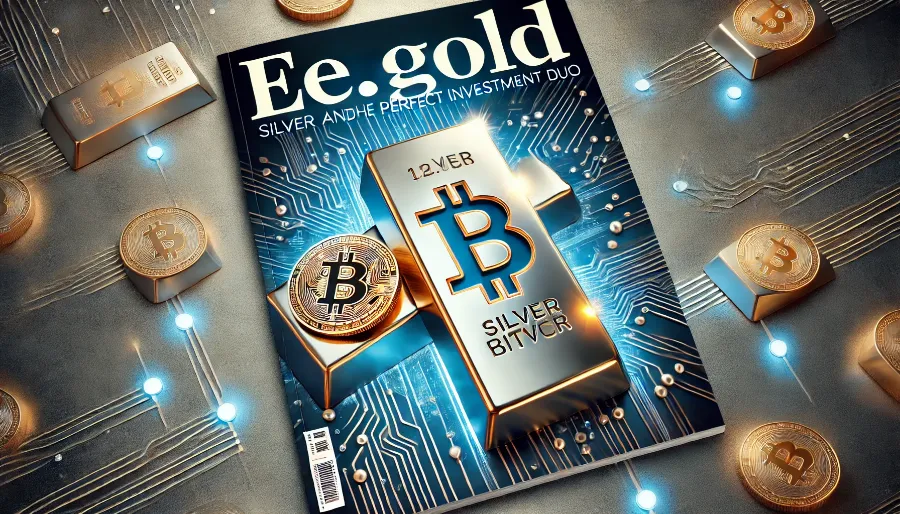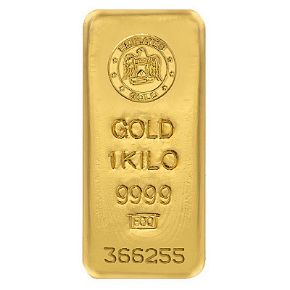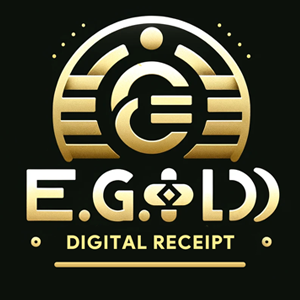
Silver and Bitcoin are two investment assets that are gaining popularity among savvy investors for their unique attributes and complementary roles. Silver, a precious metal with centuries of historical relevance, is known for its industrial utility and stability as a store of value. Bitcoin, the revolutionary cryptocurrency, represents the digital future of finance and offers high growth potential. Together, silver and Bitcoin provide a balanced investment strategy that blends traditional security with cutting-edge innovation.
Why Compare Silver and Bitcoin?
Silver and Bitcoin appeal to investors for different reasons, yet they share some common features, such as being hedges against inflation and offering portfolio diversification. Comparing these assets highlights their individual strengths and how they can work together in a modern investment strategy.
Silver
- A tangible, physical asset that has industrial and monetary uses.
- Provides stability and is less volatile than cryptocurrencies.
- Acts as a hedge during inflationary periods.
Bitcoin
- A decentralized, digital currency with no reliance on physical backing.
- Highly volatile but offers significant growth potential.
- Operates as a modern alternative store of value.
Key Similarities Between Silver and Bitcoin
- Hedge Against Inflation: Both silver and Bitcoin protect against the devaluation of fiat currencies during inflation.
- Global Demand: Silver’s industrial uses and Bitcoin’s increasing adoption make them globally sought-after assets.
- Scarcity: Silver is a naturally limited resource, and Bitcoin has a finite supply of 21 million coins, making both assets attractive to investors.
- Portfolio Diversification: Both assets provide an alternative to traditional investments like stocks and bonds.
Key Differences Between Silver and Bitcoin
| Aspect | Silver | Bitcoin |
|---|---|---|
| Physical vs Digital | Tangible metal | Intangible cryptocurrency |
| Supply | Finite, but still being mined | Capped at 21 million coins |
| Volatility | Relatively stable | Highly volatile |
| Storage | Requires safes or vaults | Stored in digital wallets |
| Accessibility | Globally accepted and trusted | Requires basic technical knowledge |
| Use Cases | Industrial, monetary, and investment | Primarily digital transactions and store of value |
Advantages of Investing in Silver
- Stability: Silver’s price movements are less volatile compared to Bitcoin, making it a safer investment for conservative investors.
- Industrial Demand: Silver’s role in electronics, solar panels, and medical applications ensures sustained demand.
- Hedge Against Inflation: Like gold, silver retains its value during economic downturns and currency devaluation.
- Affordable Entry Point: Silver is more affordable than gold, making it accessible to a broader range of investors.
- Tangible Asset: Its physical nature provides reassurance and stability in times of uncertainty.
Advantages of Investing in Bitcoin
- High Growth Potential: Bitcoin’s limited supply and increasing adoption have resulted in exponential price growth over the past decade.
- Decentralization: Bitcoin operates independently of governments and central banks, offering financial freedom.
- Global Accessibility: Bitcoin can be traded 24/7 on a global scale with low transaction fees.
- Digital Scarcity: Its fixed supply makes Bitcoin immune to inflationary monetary policies.
- Innovation: Bitcoin represents the forefront of digital currency, driving interest from institutional investors.
Risks of Silver and Bitcoin
Silver
- Market Dependency: Silver prices are influenced by industrial demand, which can fluctuate.
- Storage Costs: Physical silver requires secure storage, which can be costly.
- Slow Growth: Compared to Bitcoin, silver’s price growth is relatively modest.
Bitcoin
- Volatility: Bitcoin’s price can experience dramatic swings within short timeframes.
- Regulatory Risks: Governments are still navigating cryptocurrency regulations, which could impact its value.
- Technical Challenges: Bitcoin requires a basic understanding of digital wallets and security measures.
Combining Silver and Bitcoin in Your Portfolio
For many investors, the best approach isn’t choosing between silver and Bitcoin but investing in both to create a diversified portfolio.
- Silver for Stability: Allocate a portion of your portfolio to silver to hedge against market volatility and inflation.
- Bitcoin for Growth: Dedicate a smaller portion to Bitcoin for its potential high returns and exposure to the digital economy.
Example Allocation:
- 60% Traditional Investments (Stocks, Bonds, etc.)
- 25% Silver
- 15% Bitcoin
This allocation provides the stability of silver while leveraging Bitcoin’s growth potential, ensuring a balanced approach to wealth building.
Use Cases for Silver and Bitcoin
Silver
- Industrial Applications: Used in electronics, solar panels, and medicine, silver’s demand is driven by global technological advancements.
- Jewelry and Silverware: Aesthetic appeal and cultural significance keep silver in demand for decorative purposes.
- Investment: Silver is widely traded in the form of coins, bars, and ETFs.
Bitcoin
- Digital Payments: Bitcoin enables fast, low-cost global transactions without intermediaries.
- Decentralized Finance (DeFi): Supports decentralized applications for lending, trading, and financial services.
- Store of Value: Increasingly viewed as digital gold, Bitcoin is held as a hedge against inflation and economic instability.
FAQs About Silver and Bitcoin
1. Can Bitcoin replace silver as a store of value?
Bitcoin and silver serve different purposes. Bitcoin is digital, while silver is a tangible asset with industrial uses. Both have their place in a diversified portfolio.
2. Which is more volatile: silver or Bitcoin?
Bitcoin is significantly more volatile than silver, which is why silver is often seen as a safer investment.
3. Can I invest in both silver and Bitcoin?
Yes, combining silver and Bitcoin allows you to benefit from both stability and high growth potential.
4. How is silver stored compared to Bitcoin?
Silver requires physical storage in safes or vaults, while Bitcoin is stored digitally in wallets.
5. Is Bitcoin riskier than silver?
Yes, Bitcoin’s high volatility and regulatory uncertainty make it riskier than silver.
6. Why is silver considered more stable?
Silver’s value is influenced by industrial demand and its long history as a store of value, making it less prone to dramatic price swings.
7. What’s the future of silver and Bitcoin?
Silver will continue to play a key role in industries like renewable energy, while Bitcoin’s adoption as a digital currency and store of value is expected to grow.
The Role of Silver and Bitcoin in Modern Portfolios
Silver and Bitcoin are ideal complementary assets in a diversified portfolio, each playing a unique role that caters to different investment objectives. Their combination helps mitigate risks while offering the potential for both long-term stability and significant growth.
Silver’s Role
- Preservation of Wealth: Silver has been used as a store of value for centuries, maintaining its purchasing power across generations.
- Industrial Demand: Its utility in technology, renewable energy, and medicine ensures consistent global demand, making it an asset tied to real-world applications.
- Inflation Hedge: Silver is a tangible asset that holds its value during periods of inflation and economic uncertainty.
Bitcoin’s Role
- Disruptive Innovation: Bitcoin has introduced a new financial paradigm, offering decentralized and transparent digital transactions.
- Speculative Growth: With limited supply and increasing demand, Bitcoin’s price has seen exponential growth over the past decade, attracting high-risk, high-reward investors.
- Digital Hedge Against Inflation: Similar to silver’s role in traditional finance, Bitcoin serves as a hedge in the digital economy, especially in regions experiencing hyperinflation.
By including both assets in a portfolio, investors can align themselves with both traditional financial principles and modern technological advancements.
The Future of Silver and Bitcoin
As global financial systems continue to evolve, both silver and Bitcoin are poised to remain critical assets for investors. Let’s explore what the future might hold for each:
Silver’s Prospects
- Green Energy Revolution: Silver is a key material in solar panel manufacturing and other renewable energy technologies. As the world shifts toward sustainability, silver’s demand is expected to grow.
- Industrial Innovations: Technological advancements in electronics and medicine will continue to drive silver’s relevance in global markets.
- Increased Accessibility: Tokenized silver and digital platforms are making silver investments more accessible, bridging the gap between traditional and modern investors.
Bitcoin’s Growth
- Institutional Adoption: Large corporations, hedge funds, and financial institutions are increasingly investing in Bitcoin, solidifying its position as a mainstream asset.
- Integration with Traditional Finance: Bitcoin ETFs, crypto-friendly banks, and blockchain-based financial systems are integrating Bitcoin into the broader economy.
- Mass Adoption: As awareness grows and regulatory clarity improves, Bitcoin could see widespread adoption for payments, remittances, and wealth preservation.
Combined Synergy
The growing interest in hybrid financial products—such as silver-backed cryptocurrencies—shows that investors are beginning to appreciate the unique benefits of both silver and Bitcoin. This convergence may pave the way for innovative financial tools that combine the stability of silver with the digital convenience of Bitcoin.
Practical Investment Tips for Silver and Bitcoin
For investors looking to incorporate silver and Bitcoin into their portfolios, here are some practical tips:
Silver Investment Tips
- Buy Physical Silver: Consider coins or bars from reputable dealers for direct ownership.
- Invest in ETFs: Silver ETFs, like iShares Silver Trust (SLV), provide exposure without the need for physical storage.
- Consider Mining Stocks: Investing in silver mining companies can offer leveraged exposure to silver prices.
- Explore Tokenized Silver: Platforms like Paxos or Tether offer digital tokens backed by physical silver, combining tangibility with blockchain technology.
Bitcoin Investment Tips
- Start Small: Due to Bitcoin’s volatility, begin with a small allocation to mitigate risks.
- Use Reputable Platforms: Choose trusted exchanges like Coinbase, Binance, or Kraken for buying and trading Bitcoin.
- Secure Your Wallet: Use hardware wallets like Ledger or Trezor for long-term Bitcoin storage.
- Stay Informed: Follow news, regulatory updates, and market trends to make informed investment decisions.
Balanced Portfolio Strategy
- Allocate 20% of your alternative investments to silver for stability.
- Dedicate 10% to Bitcoin for growth potential.
- Use the remaining 70% for traditional investments like stocks, bonds, or real estate.
Real-Life Case Studies: Silver and Bitcoin Investments
Case Study 1: Long-Term Stability with Silver
In 2020, as the world faced economic uncertainty during the pandemic, silver prices rose significantly due to increased demand for safe-haven assets and industrial applications. An investor who allocated 25% of their portfolio to silver saw steady gains while avoiding the volatility of other assets like equities.
Case Study 2: Bitcoin’s Explosive Growth
An early Bitcoin investor in 2013 purchased $1,000 worth of Bitcoin when the price was around $130. By late 2021, that investment grew to over $400,000 as Bitcoin’s price skyrocketed. While the investment carried significant risk, the high reward showcased Bitcoin’s potential for growth.
Case Study 3: Diversified Portfolio Success
A forward-thinking investor allocated 15% of their portfolio to silver and 10% to Bitcoin in 2019. By 2021, Bitcoin provided high returns, while silver’s steady performance ensured overall portfolio stability during market corrections. This balanced approach mitigated risk while maximizing returns.
FAQs About Silver and Bitcoin
1. Can Bitcoin replace silver as a store of value?
While Bitcoin is often compared to precious metals, silver’s industrial uses and physical nature make it irreplaceable in many contexts. Both serve unique roles in investment portfolios.
2. Which is a safer investment: silver or Bitcoin?
Silver is generally safer due to its stability and long history as a store of value, while Bitcoin is riskier but offers higher potential returns.
3. Should I invest in both silver and Bitcoin?
Yes, investing in both allows you to balance the stability of silver with the growth potential of Bitcoin, creating a diversified portfolio.
4. How do I store silver and Bitcoin?
Silver requires physical storage in safes or vaults, while Bitcoin is stored in digital wallets, either hardware or software-based.
5. Is silver more affordable than Bitcoin?
Yes, silver is significantly more affordable and accessible to a broader range of investors.
6. Can Bitcoin be used for everyday transactions like silver?
Bitcoin is increasingly being accepted as a form of payment, but its primary use remains as a digital store of value, unlike silver’s broader industrial applications.
7. What drives silver’s price compared to Bitcoin?
Silver prices are influenced by industrial demand, supply constraints, and inflation, while Bitcoin’s value is driven by adoption rates, scarcity, and market sentiment.
8. Which is better for short-term gains?
Bitcoin is better suited for short-term gains due to its volatility, while silver is ideal for long-term, stable growth.
9. Are there hybrid investment options for silver and Bitcoin?
Yes, tokenized silver (e.g., Paxos Silver) offers blockchain-based investment in silver, blending the benefits of both assets.
10. What’s the best portfolio allocation for silver and Bitcoin?
A balanced allocation depends on your risk tolerance but generally includes a higher percentage in silver for stability and a smaller percentage in Bitcoin for growth.
Final Thoughts
Silver and Bitcoin are two unique assets that cater to different investment goals. While silver offers stability, industrial utility, and affordability, Bitcoin provides high growth potential and exposure to the digital economy. By combining both in your investment strategy, you can achieve a balance between security and innovation. Whether you’re a traditional investor or a tech-savvy enthusiast, silver and Bitcoin together offer the best of both worlds.
NOTE
This Content is the copyrighted content of EE.GOLD. All rights are reserved. You are welcome to share or use our content only by including direct links to our website. Any other form of reproduction, distribution, or use without proper attribution is strictly prohibited.
This Content is intended solely for educational purposes. The information provided does not constitute financial or investment advice.
Please note that Digital Storage Receipt, Secure Storage Solutions, and Physical Gold Sales are the only services offered by EE.GOLD.
We strictly adhere to government regulations and are firmly against all illegal financial or investment activities globally.
For further inquiries, feel free to contact us through our official channels.










.png)

